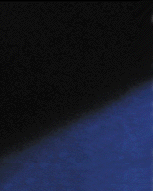|
|
 |
| This Month | Seoul in Breif | Specific Maps of Seoul | |||
| Where to Stay | What to Eat | What to Do | What to See | What to Buy | What to Know |
| Home >> Art & Craft >> Ancient printing |
The first printing metal in the world, Bul Jo Jikji Sim Che Yo Jeol, was invented in the period of dynasty of Koryeo, 3 years after the King of Woo ruled the country. The Jikiji was published in 1377 for the purpose of teaching Buddhism to disciples of Buddha, and today it helps Buddhists to understand the mind of Buddha through practicing Zen mediation. This was printed 78 years before Gutenberg in Germany was established to print Christian books. In 1972 at the International Book Festival held in Paris, the Jikiji was recognized as the first type of printing metal in the world. The Jikiji was one of the many books collected by Collend Franc, a diplomatic representative of France to Korea at the end of the Joseon period. Originally, the book consisted of 2 volumes, but volume I was lost, and so only volume II is in safekeeping in the National Museum of France. In 1989, the French president promised to return all Korean cultural assets preserved there, although the Jikiji has not been returned yet. An Ancient Printing Museum is located on the ground of the Heng Duck Sa temple, and was established to show Korean descendants their ancestor¡¯s great works. Visitors to the museum can see how Korean printing has developed over the years, and a two-minute presentation is located in the exhibition hall. Examples of Jikji are displayed on the granite wall in the museum, and the dome of the thatched house has examples from the Joseon period. In the city of Cheong Ju, there is a National Museum as well as many tourist resorts such as a mountain fortress wall called ¡°Sangdang Sanseong¡± and a recreation ground called ¡°Myeong-am Yaksoo¡±, so this area is worth a visit. During construction work to the Heung Deok temple, many relics were excavated by the Cheong Ju University Museum. This museum has 2 exhibition rooms, a cultural hall displaying types of printing and a hall full of the relics excavated from the Heung Deok temple. The museum has a total of 637 objects, including 503 ancient books, 69 printing instruments and 65 relics from the Temple of Heung Deok. How to get there (Public transport) Take a bus from the Kang Nam highway bus terminal in the direction of Cheong Ju. It takes 10 minutes from Cheong Ju City to Heung Deok. (Going to this region in your own car) If you go to this area in your own car, you need to take the Kyung Boo highway. After passing IC, turn left and drive on the national road, number 36. Then take the circular road to the area. Opening hours 09:00~17:00 (March to October), 09:00~16:00 (January and February) Telephone inquiry 043-269-0556 |
 |
| Copyright ¨Ï 2001 What's On Communications Inc. All rights reserved. Write to Us post@whatsonkorea.com. |